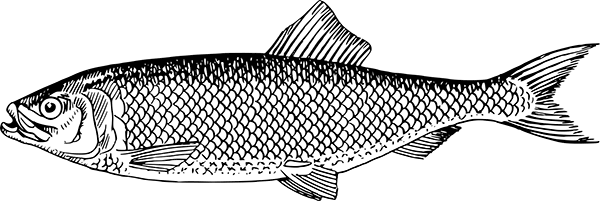On the Baltic herring, Clupea harengus membras, found in the eastern and northern Baltic and in the Gulf of Bothnia
BALTIC HERRING
Clupea harengus membras is a subspecies of the Atlantic herring, which has adapted to low saline conditions.
The Baltic becomes progressively less saline the further you go East and North. In the Gulf of Bothnia it is almost brackish. The herring, in common with other Clupeidae, is highly adaptable to changes in salinity, but, as with changes in water temperature at the larval stage, the fish’s size is affected.
Baltic herring (strömling in German, strömming in Swedish) has an average length of only 15 cm, but it punches above its weight with a high fat content.
It comes in Autumn and Spring spawning forms. The Autumn spawners also come in large- and small-eyed forms. Confusingly, both Autumn and Spring spawners include giant strömling variants, which grow to over 30 cm and could, to the uninformed eye, easily be mistaken for Atlantic herrings.
Its flavours are specifically required by several recipes from Sweden, Finland and the Baltic States. Some Finnish recipes for Jansson’s Temptation look to the Baltic herring, although most contemporary Swedish ones suggest the even smaller canned sprats confusingly known in Sweden as ansjovis. It is the Baltic herring, however, which, legend has it, was originally transformed through insufficient salting into the strange fermented wonder that is Surrströmming.
See also
- BLACK HERRING
- BLOATER
- BUCKLING
- CANNING
- DRIED HERRING
- GOLDEN HERRING
- GRANDMOTHER’S RECIPES
- GREEN HERRING
- HERRING BHURTA
- HERRING UNDER A FUR COAT
- JANSSON’S TEMPTATION
- JEWISH RECIPES
- KIPPER
- NEUCRANTZ: ON HERRING (1654)
- OATMEAL
- RECIPES FROM THE HERRING BOARD
- ROLLMOPS & BISMARCKS
- RED HERRING
- SALT
- SCHMALTZ HERRING
- SILVER HERRING
- SURSTRÖMMING
- TAXONOMY
